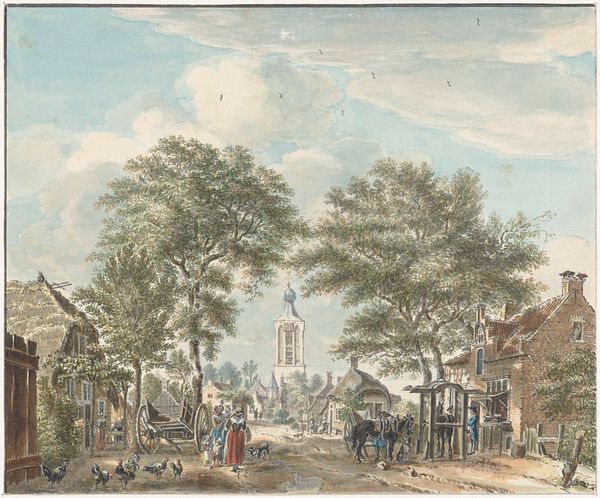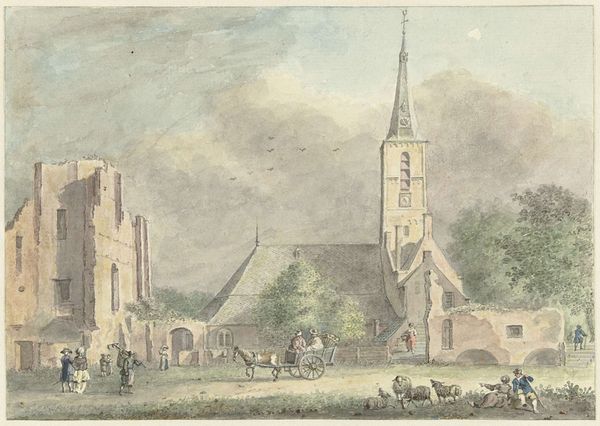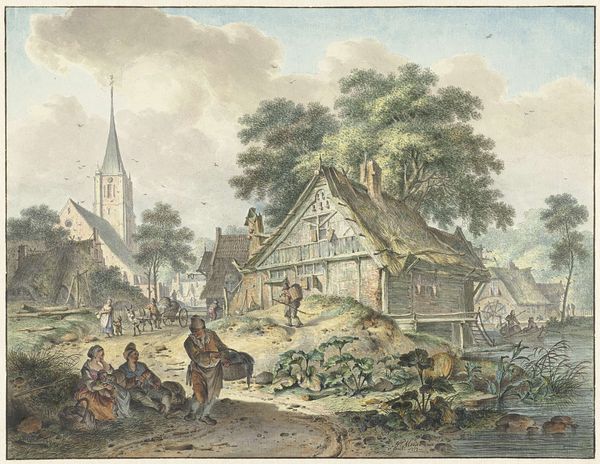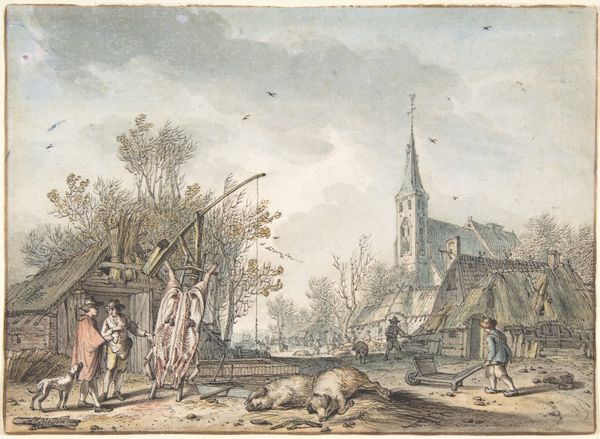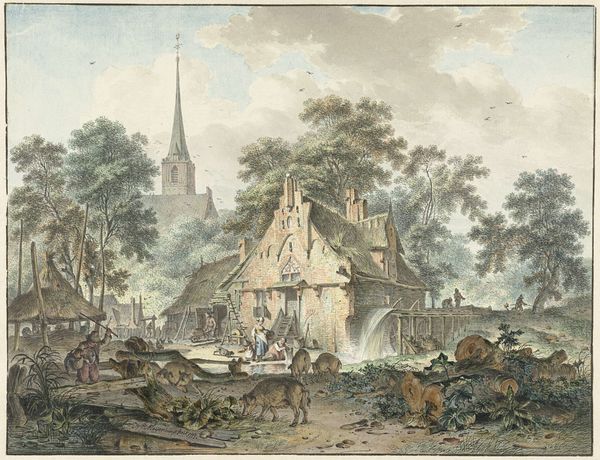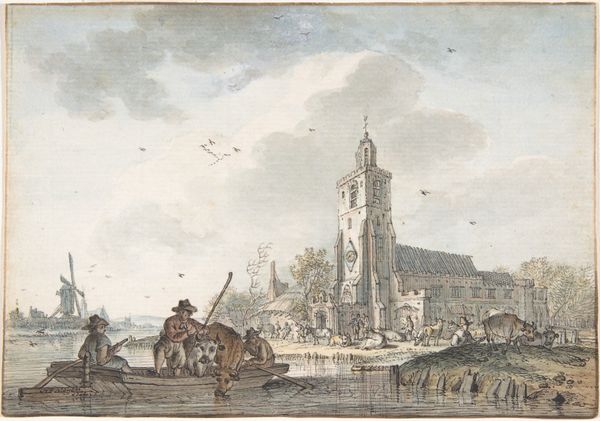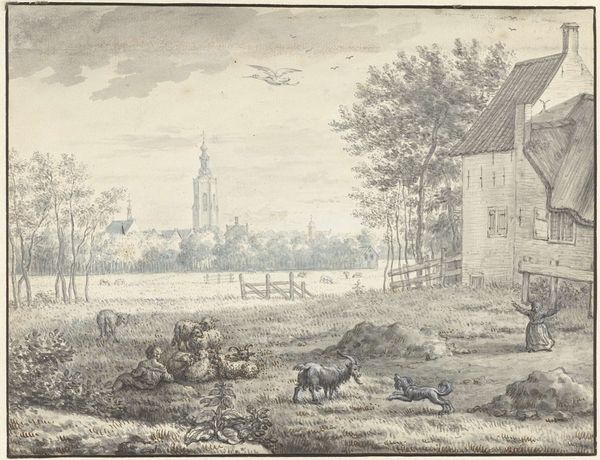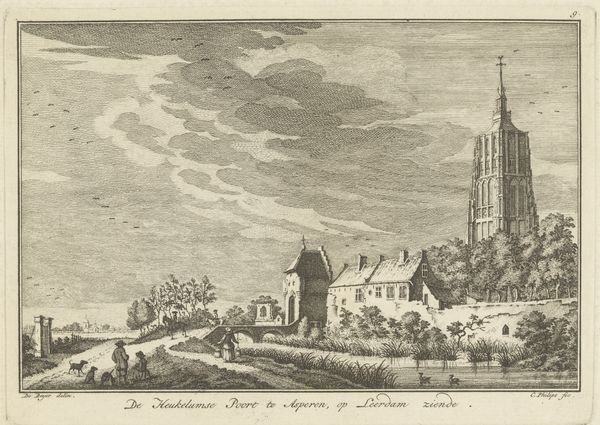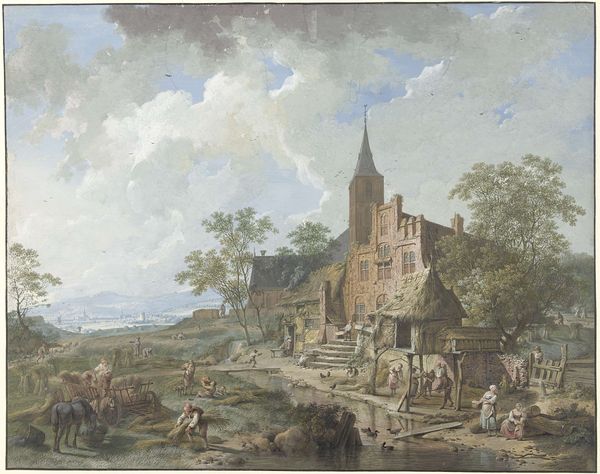
Dimensions: sheet: 5 3/16 x 7 7/16 in. (13.1 x 18.9 cm)
Copyright: Public Domain
Editor: Here we have Hendrik Meijer’s “May,” created in 1772 using colored pencil. There's a really lovely, peaceful atmosphere, despite all the figures bustling about. The church in the background grounds the scene, while the people provide life and movement. How do you interpret this work? Curator: It's fascinating how Meijer uses everyday scenes to communicate deeper cultural values. The steeple rising prominently suggests not only faith, but perhaps also civic pride and stability. How do you feel about the way it dominates the scene, even dwarfing some of the figures? Editor: Well, the people don’t seem bothered by it! They are busy with their own affairs in the marketplace. Curator: Exactly. This scene isn’t about pious devotion; it's about communal activity, mirroring the month of May, a time historically associated with renewal and festivities. Notice how different generations are represented. Editor: Yes! Children, adults, older folks… it really does capture a broad slice of life. The dog, too! Curator: And how each group seems engaged in distinctly symbolic activities tied to this concept of renewal – selling, crafting, trading. The colors, too, add a vibrancy that signifies life's continuation. Does this shift your perspective at all? Editor: It does. Initially, I just saw a snapshot of 18th-century life, but now I see how carefully Meijer constructed it to express something larger about society and continuity. Curator: Precisely. Artists like Meijer are not merely reflecting reality; they're actively shaping how we remember and understand it, embedding collective cultural memory in these deceptively simple images. Editor: That’s an interesting point. It shows the power an artist has in shaping perception. Thank you for this different viewpoint.
Comments
No comments
Be the first to comment and join the conversation on the ultimate creative platform.
